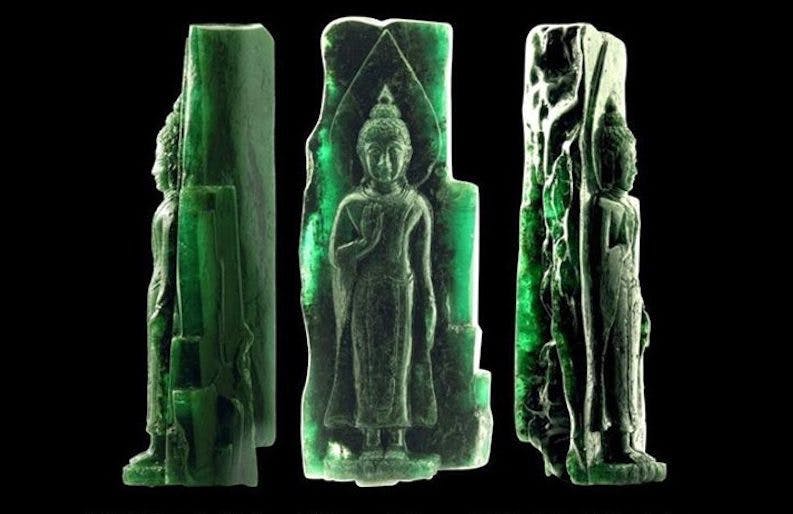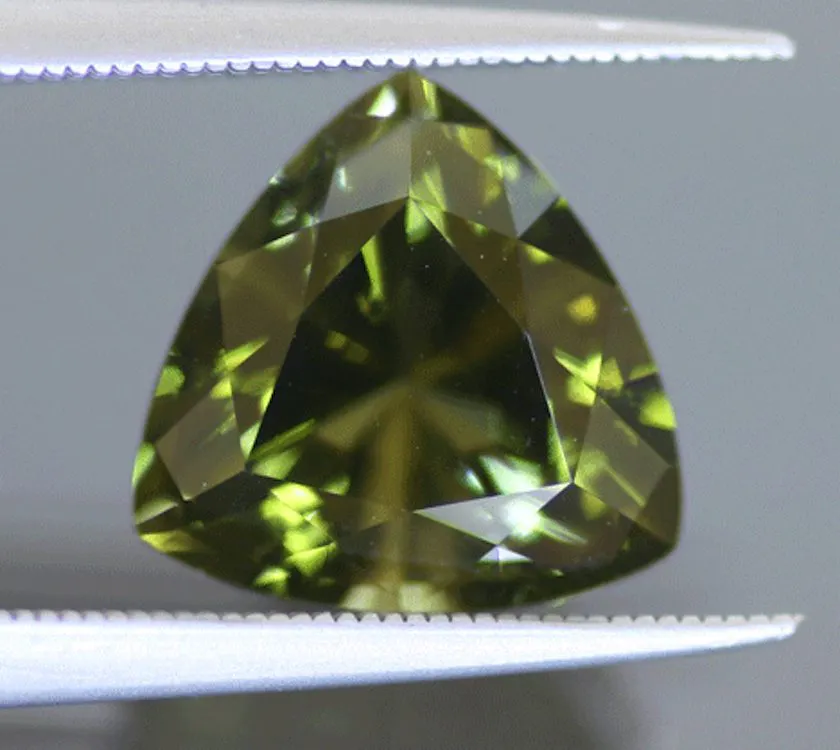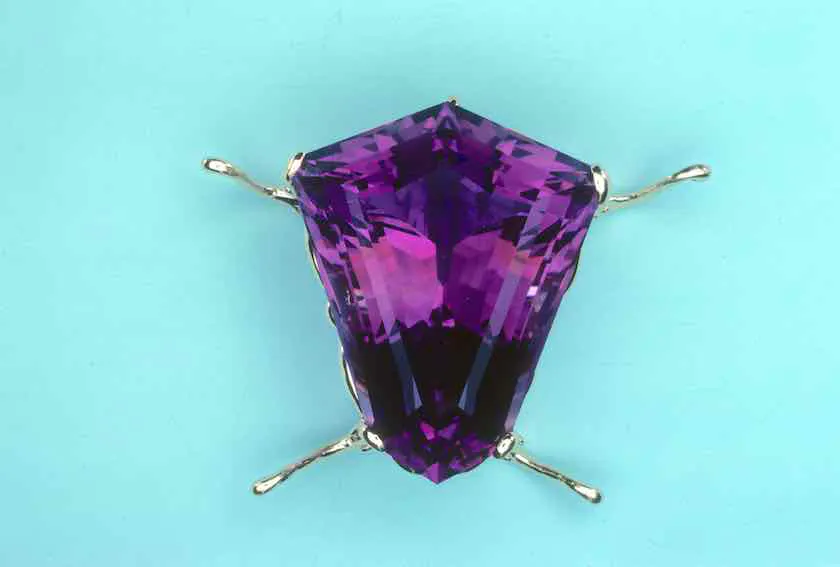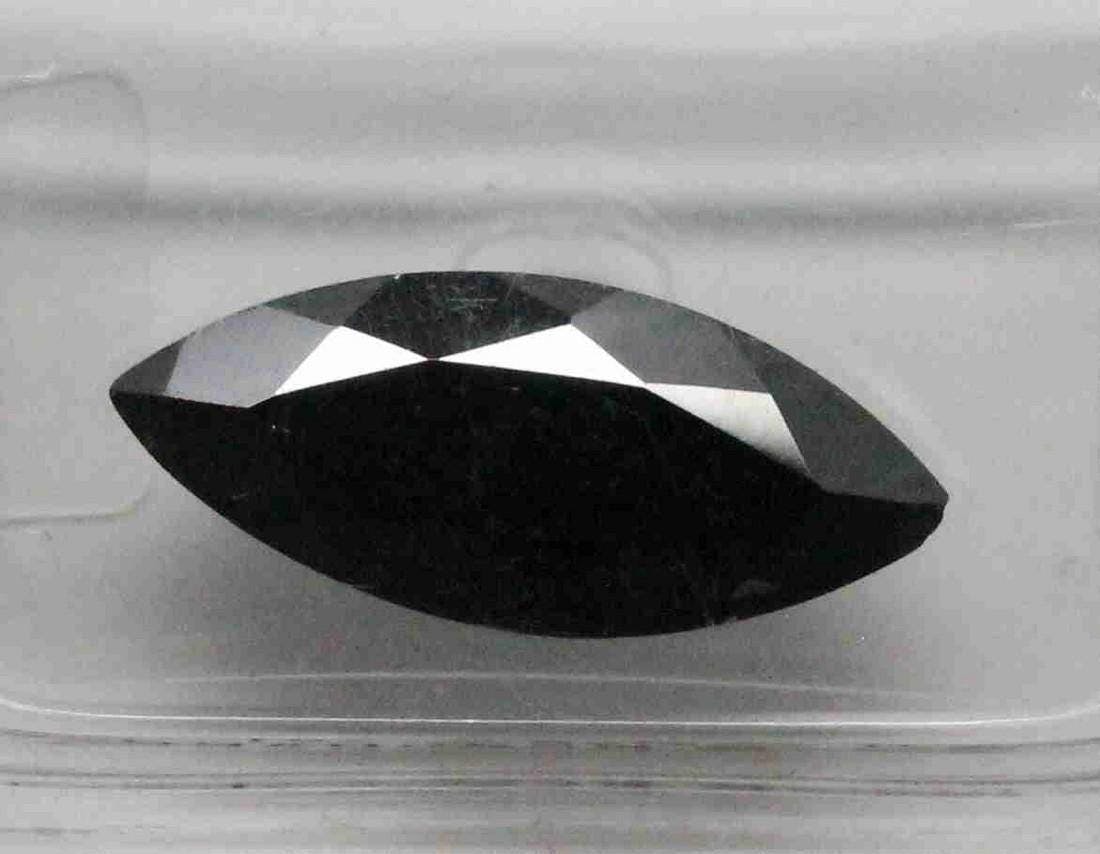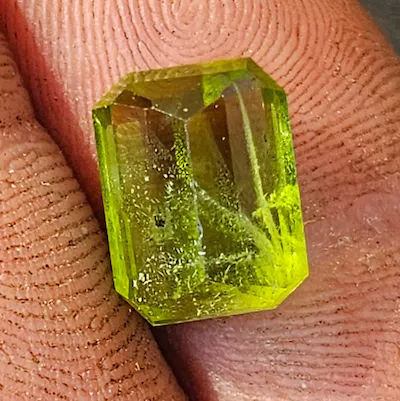News
Standard Gem Sizes Chart
Discover the perfect fit for your gemstone with the Standard Gem Sizes Chart at Melogems! Our comprehensive chart not only outlines the standard sizes for popular gem cuts but also guides you on estimating gem weight based on size. This valuable resource empowers gem enthusiasts and industry professionals alike, aiding in informed decisions when purchasing gems or selecting cut designs. Save time and money by utilizing this essential tool from Melogems.
Standard Gem Sizes Chart
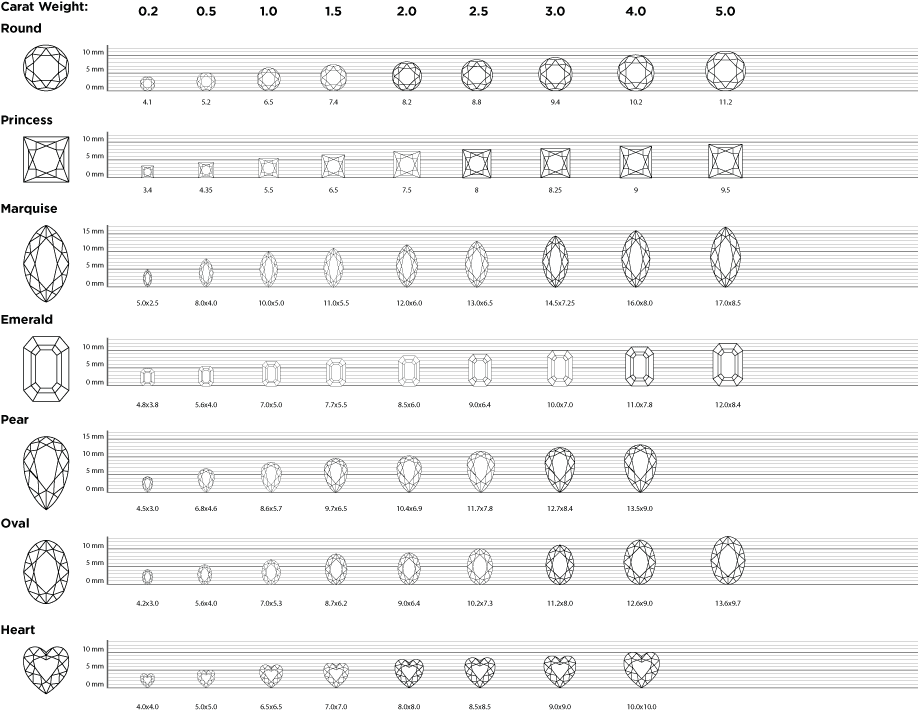
Choosing a Standard Setting or a Custom Setting
When it comes to purchasing or setting a gemstone, one important factor to consider is whether to choose a standard setting or a custom setting. Standard settings are mass-produced and come in predetermined sizes for popular gem cuts. On the other hand, custom settings are made specifically to fit the gemstone you choose. Selecting a standard setting can save you time and money, as they are readily available and generally less expensive. However, if your gemstone does not fit perfectly into a standard setting, it may be necessary to have a custom setting made, which can involve more time and expense.
Do Gems Need to Match Standard Settings Precisely?
Contrary to popular belief, a gemstone does not need to match a standard setting precisely in terms of size. Skilled metalsmiths have the ability to modify a standard setting to accommodate a variety of gem sizes. For instance, round gems can generally fit into standard settings with ease. However, for other shapes such as squares, ovals, emeralds, and marquis cuts, metalsmiths must consider various factors to ensure a proper fit. As a general rule, gem sizes under one carat can deviate by 0.1 mm from the specified setting size, while gem sizes over one carat can have a deviation of 0.2 mm or more.

Estimating Weights for Gemstones
When it comes to gemstones, weight is often an important consideration. The carat weights provided in the standard gem sizes chart are based on diamonds cut to ideal proportions. However, colored gemstones are typically cut with more volume than diamonds, causing them to weigh more for a given size. Additionally, the density or specific gravity (SG) of the gemstone material affects its weight. Two gemstones of the same size and shape may have different weights due to variations in their specific gravities. It’s important to keep in mind that the provided carat weights are estimates and can vary depending on the specific gemstone and its cut.
Rounds
Round gemstones are the most versatile shape and can fit easily into standard settings. The size and weight estimates for round gems are as follows:
- 1.6 mm: 0.02 carat
- 2 mm: 0.03 carat
- 2.5 mm: 0.06 carat
- 3 mm: 0.10 carat
- 3.5 mm: 0.16 carat
- 4 mm: 0.25 carat
- 4.5 mm: 0.33 carat
- 5 mm: 0.50 carat
- 5.5 mm: 0.65 carat
- 6 mm: 0.75 carat
- 6.5 mm: 1.0 carat
- 7 mm: 1.25 carat
- 8 mm: 2.0 carat
- 9 mm: 2.75 carat
- 10 mm: 3.5 carat
- 11 mm: 4.6 carat
- 12 mm: 6.0 carat
- 13 mm: 7.75 carat
- 14 mm: 9.65 carat
- 15 mm: 11.85 carat
- 16 mm: 14.35 carat
- 17 mm: 17.25 carat
- 18 mm: 20.5 carat
- 19 mm: 24.0 carat
- 20 mm: 28.0 carat
- 21 mm: 34.8 carat
- 22 mm: 41.8 carat
- 23 mm: 49.8 carat
- 24 mm: 57.9 carat
- 25 mm: 68.7 carat
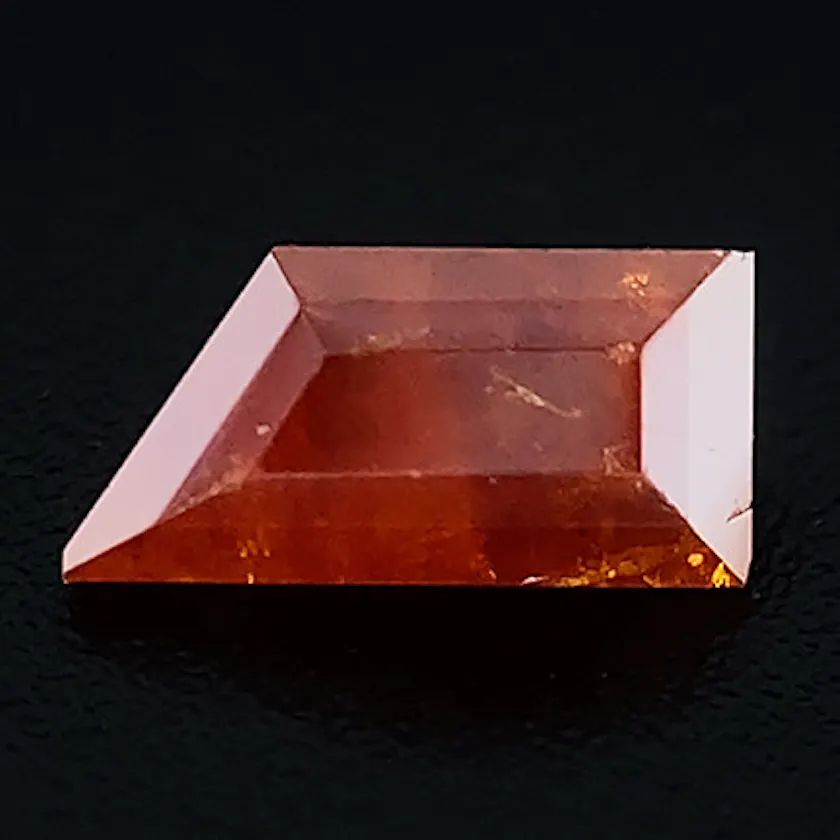
Squares
Square gemstones, such as princess cut diamonds, require specific considerations for fitting into standard settings. The size and weight estimates for square gems are as follows:
- 5 mm: 0.75 carat
- 6 mm: 1.3 carat
- 7 mm: 2.05 carat
- 8 mm: 2.9 carat
- 9 mm: 4.4 carat
- 10 mm: 6.0 carat
- 11 mm: 8.0 carat
- 12 mm: 10.35 carat
- 13 mm: 13.2 carat
- 14 mm: 16.5 carat
- 15 mm: 20.25 carat
- 16 mm: 24.6 carat
- 18 mm: 32.2 carat
- 20 mm: 43.0 carat
- 22 mm: 58.5 carat
- 25 mm: 79.6 carat
Ovals
Oval gemstones are another popular shape that can be accommodated in standard settings with slight modifications. The size and weight estimates for oval gems are as follows:
- 5 x 3 mm: 0.25 carat
- 6 x 4 mm: 0.5 carat
- 7 x 5 mm: 1.0 carat
- 8 x 6 mm: 1.5 carat
- 9 x 7 mm: 2.5 carat
- 10 x 8 mm: 3.0 carat
- 11 x 9 mm: 4.0 carat
- 12 x 10 mm: 5.0 carat
- 14 x 10 mm: 6.0 carat
- 16 x 12 mm: 8.0 carat
- 18 x 13 mm: 14.2 carat
- 20 x 15 mm: 20.3 carat
- 25 x 18 mm: 52.2 carat
- 30 x 22 mm: 54.5 carat
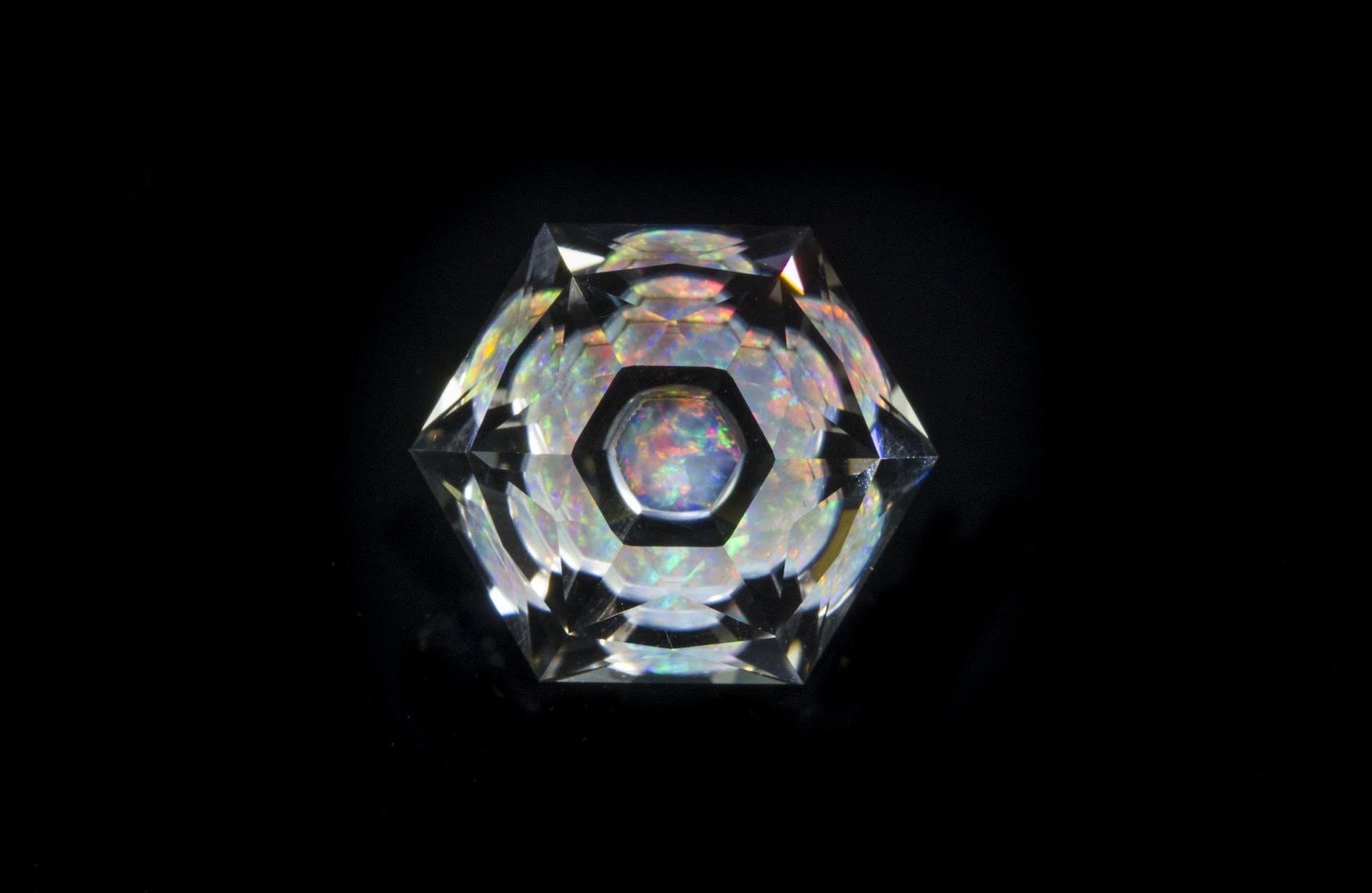
Emerald
The emerald cut, characterized by its rectangular shape with trimmed corners, can be applied to various gemstones. The size and weight estimates for emerald-cut gems are as follows:
- 4 x 2 mm: 0.10 carat
- 5 x 2.5 mm: 0.25 carat
- 6 x 3 mm: 0.30 carat
- 7 x 4 mm: 0.75 carat
- 8 x 5 mm: 1.0 carat
- 9 x 6 mm: 1.5 carat
- 10 x 5 mm: 1.0 carat
- 10 x 7 mm: 2.25 carat
- 11 x 7 mm: 2.5 carat
- 12 x 6 mm: 2.0 carat
- 12 x 8 mm: 3.0 carat
- 14 x 7 mm: 3.0 carat
- 14 x 10 mm: 6.0 carat
- 16 x 8 mm: 4.0 carat
- 16 x 12 mm: 8.6 carat
- 18 x 13 mm: 12 carat
- 20 x 15 mm: 17.3 carat
- 25 x 18 mm: 18.7 carat
- 30 x 22 mm: 30.6 carat
Pear
Pear-shaped gemstones, sometimes referred to as teardrop-shaped, have a distinctive look that adds elegance to any piece of jewelry. The size and weight estimates for pear-shaped gems are as follows:
- 5 x 3 mm: 0.25 carat
- 6 x 4 mm: 0.5 carat
- 7 x 5 mm: 0.75 carat
- 8 x 6 mm: 1.5 carat
- 9 x 7 mm: 2.5 carat
- 10 x 8 mm: 3.0 carat
- 11 x 9 mm: 4.0 carat
- 12 x 10 mm: 5.0 carat
- 14 x 10 mm: 6.0 carat
- 16 x 12 mm: 10.5 carat
- 18 x 13 mm: 14.2 carat
- 20 x 15 mm: 20.3 carat
- 25 x 18 mm: 30.6 carat
- 30 x 22 mm: 43.0 carat
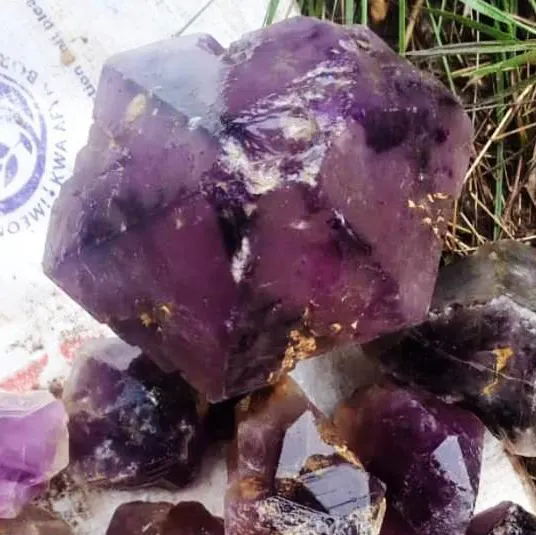
Marquis
Marquis-shaped gemstones have a distinctive elongated shape with pointed ends, making them a unique choice for jewelry. The size and weight estimates for marquis gems are as follows:
- 4 x 2 mm: 0.10 carat
- 5 x 2.5 mm: 0.25 carat
- 6 x 3 mm: 0.30 carat
- 7 x 4 mm: 0.75 carat
- 8 x 4 mm: 0.75 carat
- 9 x 4.5 mm: 0.85 carat
- 10 x 5 mm: 1.0 carat
- 11 x 5.5 mm: 1.4 carat
- 12 x 6 mm: 2.0 carat
- 14 x 7 mm: 3.0 carat
- 16 x 8 mm: 4.0 carat
- 18 x 9 mm: 6.0 carat
- 20 x 10 mm: 8.5 carat
- 25 x 12.5 mm: 18.3 carat
- 30 x 15 mm: 35.3 carat
Related Articles
- Gemstone Doublets, Triplets, and Other Assembled Stones: Learn about the creation of assembled gemstones made from two or more materials, which can result in durable and affordable jewelry.
- The Sacred Emerald Buddha: Explore the carving of a 3,600-carat emerald into a sacred Buddha figure, carrying a message of peace.
- Understanding Gem Synthetics, Treatments, and Imitations, Part 1: An Introduction: Gain insight into the science behind synthetic gemstones, treatments, and imitations, which is crucial for gem buyers.
- An Introduction to Gem Identification: Discover the detective work and art involved in gem identification and how gemologists distinguish gem species.
- Latest Articles: Stay up to date with the latest gem-related articles from the International Gem Society.
- Latest Community Discussions: Engage with fellow gem enthusiasts and professionals in the IGS Community and participate in discussions about various gem-related topics.
- Never Stop Learning: Join the IGS community to gain access to trusted diamond and gemstone information, including free guides and a weekly newsletter.
In conclusion, when choosing a gemstone for jewelry, it’s important to consider whether a standard setting will be suitable or if a custom setting is necessary. Remember that gems do not need to match standard settings precisely, as skilled metalsmiths can make adjustments to accommodate different sizes. Additionally, estimating gem weights based on size can be a helpful guideline, but variations in density and cut can affect the actual weight. Consult the standard gem sizes chart and consider the specific shape and size of your gemstone to make an informed decision. Happy gemstone shopping!

